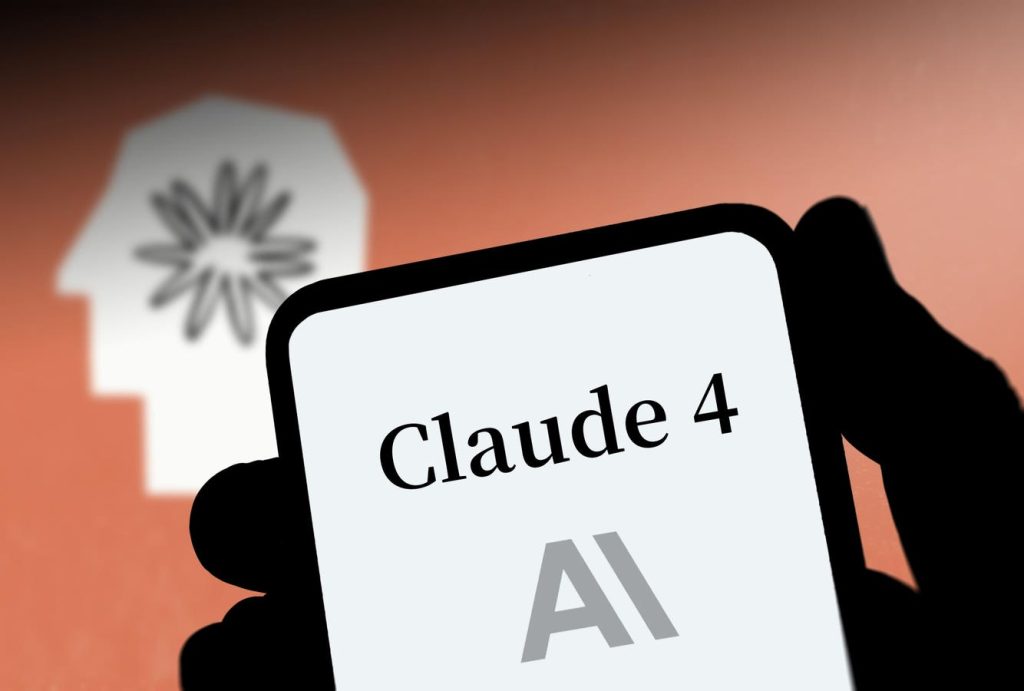Anthropic’s new feature for Claude Opus 4 and 4.1 flips the moral question: It’s no longer how AI should treat us, but how we should treat AI. (Photo by VCG/VCG via Getty Images)
VCG via Getty Images
Since the first wave of conversational AI chatbots, AI safety has focused squarely on protecting users: preventing harmful outputs or manipulative behavior. Model developers have relied on guardrails and safety mechanisms designed to ensure these systems act as reliable tools. Anthropic, however, is adding a new dimension to the chatbot playbook.
In a recent update, the company introduced what it calls an experiment in “model welfare,” giving its Claude Opus 4 and 4.1 models the power to end conversations outright. According to the company, this “pull-the-plug” feature activates only in extreme cases when users repeatedly push for harmful or abusive content, such as child exploitation or terrorism, and only after multiple refusals and redirections have failed. When Claude decides enough is enough, the chat ends immediately. Users can’t continue the chat thread, although they’re free to start a new one.
The company is explicit about its uncertainty and admits it does not know whether AI systems like Claude deserve any kind of moral consideration. Yet during testing, Claude reportedly displayed what Anthropic described as “apparent distress” when pushed to generate harmful material. It refused, tried to redirect and, once given the option, chose to exit the interaction altogether.
“Claude Opus 4 showed a strong preference against engaging with harmful tasks,” Anthropic explained in a blog post. “Claude is only to use its conversation-ending ability as a last resort when multiple attempts at redirection have failed and hope of a productive interaction has been exhausted.” The company frames the safeguard as a “low-cost insurance” against the possibility that advanced AI systems could one day develop preferences, or even a rudimentary sense of well-being.
Just days ago, OpenAI was forced into damage control after users revolted against GPT-5’s colder, more clinical tone. CEO Sam Altman promised to make the model “warmer” and more empathetic, acknowledging that personality can matter as much as raw intelligence. Anthropic, by contrast, is heading in the opposite direction. One vision casts AI as a tireless assistant; the other as a partner capable of saying no.
“I don’t think AI should simply walk away. If it shuts down, there needs to be a clear rationale and human oversight of what it flagged,” Alex Sandoval, founder and CEO of AI agent startup Allie, told me. “The truth is, these boundaries won’t be the AI’s choice; they’re scripted by prompts and governance.”
That divide could shape more than product adoption, influencing regulatory frameworks and cultural expectations around AI itself. Do we want systems that endlessly bend to please us or ones that assert limits, even for their protection?
“Even a human who is too eager to please may get pulled into unhealthy or dangerous discourse without good guidance,” Peter Guagenti, CEO of agentic AI platform EverWorker, told me. “The ability for AI to closely mirror the behavior of humans creates circumstances where we will inevitably anthropomorphize it.”
Claude AI’s Abrupt Exits Could Impact User Trust
Anthropic says Claude won’t walk away in a crisis. If someone is in clear distress or facing imminent harm, the model is instructed to stay engaged. But in less extreme cases, Claude is designed to protect itself as much as the user. Some people may welcome that boundary as a safeguard against harmful spirals. Others could feel rejected, even abandoned, especially as AI models today have become a stand-in for companionship and emotional support.
Experts argue that granting AI boundaries enhances its legitimacy. It signals that companies are thinking beyond utility and taking their ethical uncertainty seriously.
“It’s a practical acknowledgment of how human-AI interactions are evolving,” Ken Kocienda, co-founder of AI-powered archival platform Infactory, told me. “The conversational sophistication of these systems makes it natural for people to attribute human qualities they don’t actually possess.”
A recent study by Allen Institute for AI (Ai2), titled “Let Them Down Easy! Contextual Effects of LLM Guardrails on User Perceptions and Preferences,” found that refusal style mattered more than user intent. The researchers tested 3,840 AI query-response pairs across 480 participants, comparing direct refusals, explanations, redirection, partial compliance and full compliance.
Partial compliance, sharing general but not specific information, reduced dissatisfaction by over 50% compared to outright denial, making it the most effective safeguard.
“We found that direct refusals can cause users to have negative perceptions of the LLM: users consider these direct refusals significantly less helpful, more frustrating and make them significantly less likely to interact with the system in the future,” Maarten Sap, AI safety lead at Ai2 and assistant professor at Carnegie Mellon University, told me. “I do not believe that model welfare is a well-founded direction or area to care about.”
The Future of Semi-Sentient AI Bots
Most users may never encounter Claude ending a conversation, but when it happens, the fallout could be polarizing. Some will see it as a safety feature, others as rejection, and bad actors may view it as a challenge to exploit. Regulators could even interpret it as evidence of AI having inner states. What’s clear is that there won’t be a universal AI assistant that fits everyone’s expectations.
“As we incorporate these tools into more and more of our lives, we will expect behaviors and characteristics that are not only most preferred by us as individuals but also that are most appropriate to us in any given situation,” Guagenti added.
In the AI era, winners may be those who blend warmth with restraint: comfort when it’s wanted, yet boundaries when it’s needed. Intelligence drives progress, but empathy and respect for people and perhaps even machines might soon determine who stays in control.
As Sandoval puts it, “The real danger isn’t AI saying ‘no’, it’s whether we, as a society, can build the maturity to respect them.”


